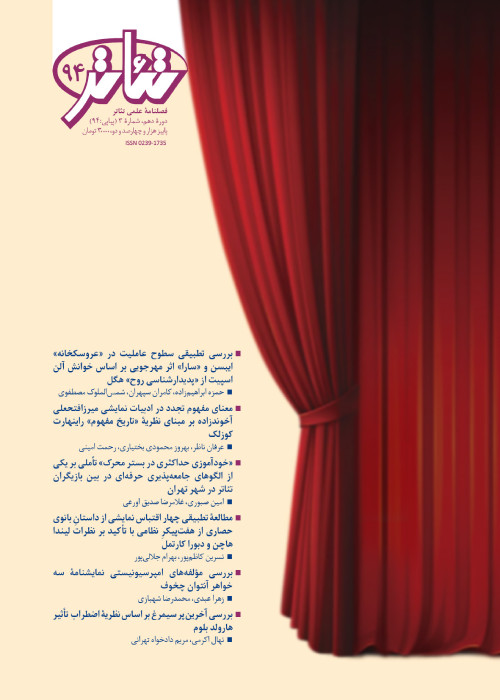Ta’ziyeh and Music, the Inseparable Truth: The Semantic Connection Between Ta’ziyeh and Iranian Dastgāhs and Āvāzs
This Article is a study of the musical tools of Ta’ziyeh and how it employs the Dastgāh and Āvāz of the Iranian traditional music, which is considered an Iranian- Shi’ite artform. What opens Ta’ziyeh for more examination today in Iran and even worldwide is its intrinsic dependence to musical elements as well as utilization of the two entangled components of poetry and drama. Moreover, Ta’ziyeh’s involvement with mythology and with matters of faith has turned it into an interdisciplinary artform and a drama with a musical-ceremonial theme. The different analyses done in this article show that this musical phenomenon is a structuralist formation where the choice of Dastgāhs, Āvāzs, and melodic circles, and in all sections i.e., Pishkhāni (overture), Noheh (elegy), monologues, dialogues, and instrumental sections, is contingent upon the specific contents and needs of each Ta’ziyeh. For this reason, to better understand how Ta’ziyeh works and how the musical elements of Ta’ziyeh are picked it is necessary to study Ta’ziyeh from a musical point of view. Therefore, the current study uses the existing Ta’ziyeh texts and performances to take an analytical and interpretational approach to understanding the ways the choice of music and the contents of the drama are connected, and meanwhile introduces the properties and the variables of Ta’ziyeh. The results of this study include important points, such as: Choosing a main Dastgāh or Āvāz as the performer of the musical atmosphere, specific to each Ta’ziyeh; Commencement and conclusion of the Ta’ziyeh is presented in a specific Dastgāh or Āvāz, suitable to each Ta’ziyeh and the landscape of its story; The melodic design, choice of Dastgāh, Āvāz, and Goosheh (piece of Radif), in different kinds of Ta’ziyeh’s monologues such as Monājāt (fervent prayer, often chanted), Khatāb and Farmān (addressing and commanding), speaking to self (Monologue), Rajaz-Khāni (recital of epic verses in defiance of enemy), and characters’ speech, are all done according to the capacities of each part, dramatic events, and contents of the drama; The casual use of excess syllables, like the extended, redundant “O” vowels, extra “keh”s (meaning which, or that), etc in order to achieve harmony between the melody and the poems; all of the above are counted towards the results of this study.
- حق عضویت دریافتی صرف حمایت از نشریات عضو و نگهداری، تکمیل و توسعه مگیران میشود.
- پرداخت حق اشتراک و دانلود مقالات اجازه بازنشر آن در سایر رسانههای چاپی و دیجیتال را به کاربر نمیدهد.


